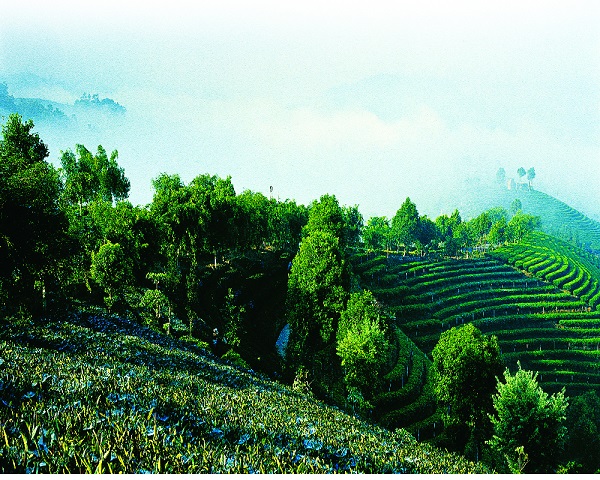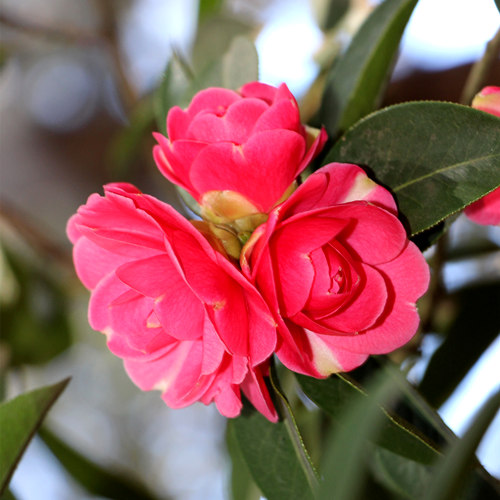
Gaoligong Mountain ─ The Last Ark
In an ancient legend, human and animals board the Noah's ark to escape the flood which will drown the world. Thus the ark becomes a fable, whenever the ancient planet in which where we are inhabiting meet with disasters, there will always be an ark carrying beings toward the other shore. Scientists say, in a long prehistoric ice age, many endangered species found their ancient ark - the Gaoligong Mountain, and survived there. And ten million years later, we found that they are disappeared in other parts of the earth, but still living in the Gaoligong Mountain, lonely.

A bird's eye view of Gaoligong Mountains and Nujiang River

Before I left for Gaoligong Mountain, I've read a book called "Human's Two-sided Bookshelf ─ Interpretation of Gaoligong Mountain", written by Fan Wen. The book interprets that: "The giant long Gaoligong Mountains originate from the Boxoila Ling at the southeast end of Qinghai-Tibet Plain. And in sunny days, you can look far away to see the snowy mountain in Tibetan regime." In fact, I've mounted the Gaoligong Mountain many times, but I didn't see those towering snow peaks in Tibet, unless standing on the 5,128 meters high Gargap Peak. As the most important mountain range in the Hengduan Mountain Range, its significance is in bordering rather than looking in distance at a high point. When you stand at the top of Gaoligong Mountain, one step eastwards will take you to the Eurasian continent, and one step westwards will take you to the Indian continent. Hundreds of millions of years ago, these two continents drifted and collided, resulting the rise of Gaoligong Mountains, from north to south, from the deep sea. Gaoligong Mountain is the most spectacular wall, which separates the two key Asian regions, on the earth.

Gaoligong Mountain, South Zhaigongfang

Now let's look at the north-to-south direction, Gaoligong Mountains originates from north to south, diving from the Tibet plateau to the Indochina peninsula, over 600 km long, and its slim stature spans five latitudinal transects. A metaphor is used to describe it: the Gaoligong Mountain is a huge bridge connecting the Qinghai-Tibet Plateau and the Indochina Peninsula. Of course it is a "god-build" bridge. In the eyes of ecologists in the world, the east Himalayan region is one of the top ten key regions that have the richest species in the world, as comparable to the South America Amazon region, and Gaoligong Mountain is exactly on the eastern front of Himalayan region. No other mountain can be like Gaoligong Mountain in the aspect of rich but relatively disparate natural condition: being snowy all year round in the northern part, extending into subtropical jungle in the southern part, rainy and heavily covered by plants in the western part due to warm wet and humid air streams from the Indian Ocean, and typical dry-hot valley climate of the Nu River valley in the eastern part. The climate diversity determines the diversity of species, as many as tens of thousands of kinds of animals and plants. Scientists call it the "north-south corridor for plants and animals". When severe geological movements happened in the earth, Gaoligong Mountain became a "refuge" for plants and animals from four cardinal points, thus many endangered species are preserved in the Gaoligong Mountain, making it famous as a rare animal shelter, a natural botanical garden and a species gene pool. Gaoligong Mountain National Nature Reserve stands a priority protection status among China's numerous nature reserves, its biological diversity has a pivotal position in China, thus it was listed as A level reserve, which is of international significance, by the World Wildlife Fund, and was admitted for "members of the world biosphere reserve" by UNESCO.

Gaoligong Mountain, Immense Forest

George Forrest, coming from the remote England, was the first person to interpret Gaoligong Mountain. In 1904, George Forrest was assigned by the Edinburgh Botanical Garden to Gaoligong Mountain in Yunnan. In order to read the mystery of this mountain, he spent 28 years, until 1932 when he fell down forever in a field at the foot of Gaoligong Mountain. And in these 28 years, he organized seven large collection of plants and animals, in which over 100,000 kinds of plant specimens were collected in Gaoligong Mountains area, and over 10,000 animal specimens were collected, especially birds, and also over 30,000 specimens of seeds, and then delivered them to Europe, to the UK. At that time, the President of the British Royal Geographical Society published an article and praised him: Thanks to Mr. George Forrest's hard work which makes the European garden so brilliant.

Rhododendron

The popularity of Gaoligong Mountain in the world largely because of the rhododendron giganteum which is known as the king of



